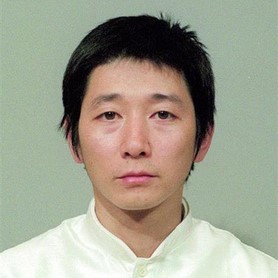
1960 - 2018
Kazuaki Okazaki
Summary
Name:
Kazuaki OkazakiYears Active:
1988 - 1989Birth:
October 08, 1960Status:
ExecutedClass:
Mass MurdererVictims:
4Method:
Bludgeoning / PoisoningDeath:
July 26, 2018Nationality:
Japan
1960 - 2018
Kazuaki Okazaki
Summary: Mass Murderer
Name:
Kazuaki OkazakiStatus:
ExecutedVictims:
4Method:
Bludgeoning / PoisoningNationality:
JapanBirth:
October 08, 1960Death:
July 26, 2018Years Active:
1988 - 1989Date Convicted:
October 23, 1998bio
Kazuaki Okazaki was born on October 8, 1960, in the city of Mine, Yamaguchi Prefecture, Japan. He was a premature baby, and his early life was marked by instability. In 1963, his parents divorced, and he was eventually renamed and raised by adoptive guardians. Unfortunately, Okazaki later reported that he was subjected to physical abuse by his adoptive father, an experience that may have left deep psychological scars during his formative years.
During his junior high school years, he encountered a German Protestant Christian who introduced him to Christianity. Okazaki began attending Sunday school and studying the Bible, which sparked a spiritual interest that would later influence his decision to join a religious movement.
After finishing high school in 1979, Okazaki initially wished to attend Yamaguchi University. However, due to financial constraints, he was unable to proceed with his university education and instead relocated to Matsue in Shimane Prefecture. He later found employment as a salesman, a skill that would prove significant during his time in Aum Shinrikyo.
In December 1985, Okazaki attended a conference in Kanagawa Prefecture led by Shoko Asahara, the charismatic leader of Aum Shinrikyo. Captivated by Asahara’s aura, he joined the cult and quickly became one of its more productive members. By 1986, he was heavily involved in distributing and selling Asahara’s published works, praising his energy and spiritual teachings. He rose through the group’s ranks, and his loyalty to the guru only deepened with time.
However, Okazaki's trajectory within the cult took a dark turn in September 1988 when a fellow follower died during a ritual training session. Rather than report the death to the authorities, Asahara ordered a cover-up. Okazaki obeyed. He helped incinerate the body using fireproof bricks and later scattered the ashes in Lake Shōji.
murder story
The most notorious crime involving Kazuaki Okazaki was the Sakamoto family murder, but it was not his first killing. In early 1989, a young Aum Shinrikyo member informed Okazaki of his intent to leave the cult, stating that he could no longer endure the extreme training. Rather than support the man's decision, Okazaki reported it to Shoko Asahara. The cult leader responded by ordering the man into a more severe confinement, which ultimately ended in his death. In November 1989, Okazaki and other cult members murdered him.
Later that same month, Okazaki played a central role in the murder of the Sakamoto family.
Tsutsumi Sakamoto was a human rights lawyer who had begun investigating Aum Shinrikyo’s activities. Fearing exposure, Asahara ordered his elimination. On the early morning of November 4, 1989, Okazaki and five other cult members entered the Sakamoto family’s Yokohama apartment through an unlocked door at 3 A.M. Inside, the team brutally murdered the family.
Okazaki bludgeoned Tsutsumi with a hammer. Another cultist killed Satoko Sakamoto, his wife, while their 14-month-old baby, Tatsuhiko, was injected with potassium chloride and suffocated with a cloth. The family’s remains were secretly buried, and the case remained unsolved for nearly six years.
In February 1990, Okazaki began distancing himself from the cult. He blackmailed Asahara by threatening to send photos of the burial sites to the police unless he was given money. Asahara initially refused, prompting Okazaki to send maps and photographs to the Kanagawa Prefectural Police and the Sakamoto family’s legal representatives. This pressure campaign eventually worked, and Okazaki received 8.3 million yen to stay silent. Nonetheless, he attempted to stop further letters from reaching authorities and was questioned about the original correspondence. During interrogation in 1990, he denied both his involvement and the cult's role in the murders.
It wasn’t until after the Tokyo subway sarin attack in March 1995—another mass crime carried out by Aum Shinrikyo—that Okazaki, fearing retaliation from remaining cultists, turned himself in. He confessed to the murders and provided detailed information, including maps of where the Sakamotos were buried.
Despite his cooperation, the courts did not view his surrender as genuine repentance. In his 1998 trial, prosecutors demanded the death penalty. Okazaki pleaded for clemency, citing his confession and assistance to the police. The court rejected this, saying his confession was motivated by self-preservation, not remorse. In 2001, the Tokyo High Court reaffirmed his death sentence, noting that he maintained responsibility even after defecting from the cult. On April 7, 2005, Japan's Supreme Court upheld the ruling, stating his actions were “cruel and brutal” and carried out solely to protect the cult's interests.
In a desperate comparison, Okazaki cited the case of Ikuo Hayashi, a cultist involved in the Tokyo subway attack who received a life sentence in exchange for testimony. But the courts dismissed this argument, stressing that unlike Hayashi, Okazaki had denied his crimes in 1990 and confessed only when he feared for his life.
On July 26, 2018, after nearly 13 years on death row, Kazuaki Okazaki was executed by hanging. His death came weeks after the mass execution of several Aum Shinrikyo leaders. Japan’s Justice Minister Yoko Kamikawa signed the warrant, stating that “the majority of the public believe that there is no other option than to execute those who have committed brutal crimes.”